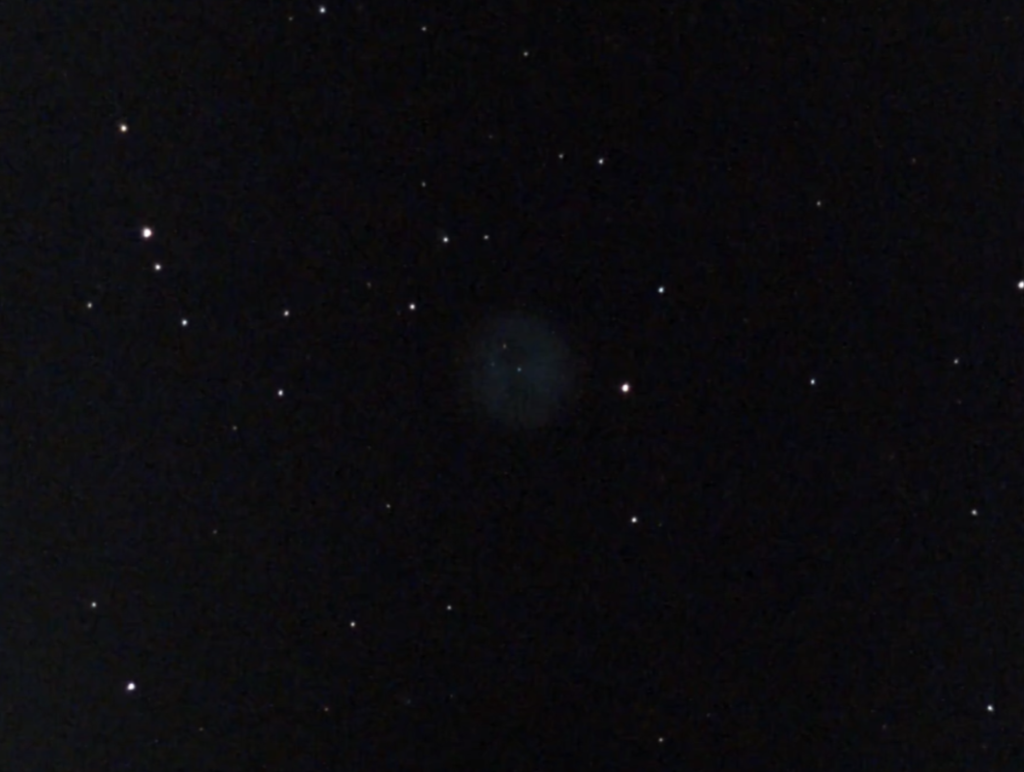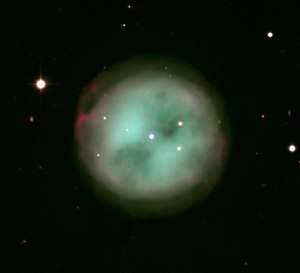M1 | NGC 3587 | Owl Nebula | Ursa Major | 2,600 Light Years Away
Our Best Image

Messier 97, also known as the Owl Nebula, is a planetary nebula located in the constellation Ursa Major. Discovered by Pierre Méchain in 1781 and later included in Charles Messier’s catalog, it is situated approximately 2,030 light-years away from Earth. The Owl Nebula gets its name from the two dark patches resembling owl eyes visible in certain observations, created by the interaction of the nebula’s gases and dust with the radiation emitted by its central star.
The central star of Messier 97 is a white dwarf, the remnant of a sun-like star that has exhausted its nuclear fuel. As the central star sheds its outer layers, the expelled material forms the intricate and glowing shell of the planetary nebula. The unique appearance of the Owl Nebula makes it a fascinating subject for astronomers studying the final stages of stellar evolution, providing insights into the processes of mass loss and the formation of planetary nebulae.
Messier 97 is a popular target for amateur astronomers due to its relatively bright and compact nature, making it visible in small telescopes. The intricate details of the nebula, including the “owl eyes,” are more pronounced in long-exposure photographs, revealing the delicate structures created by the interplay of radiation and expelled stellar material. The study of Messier 97 enhances our understanding of the life cycles of stars and the transformative processes that occur as they evolve into the next stage of their existence.

